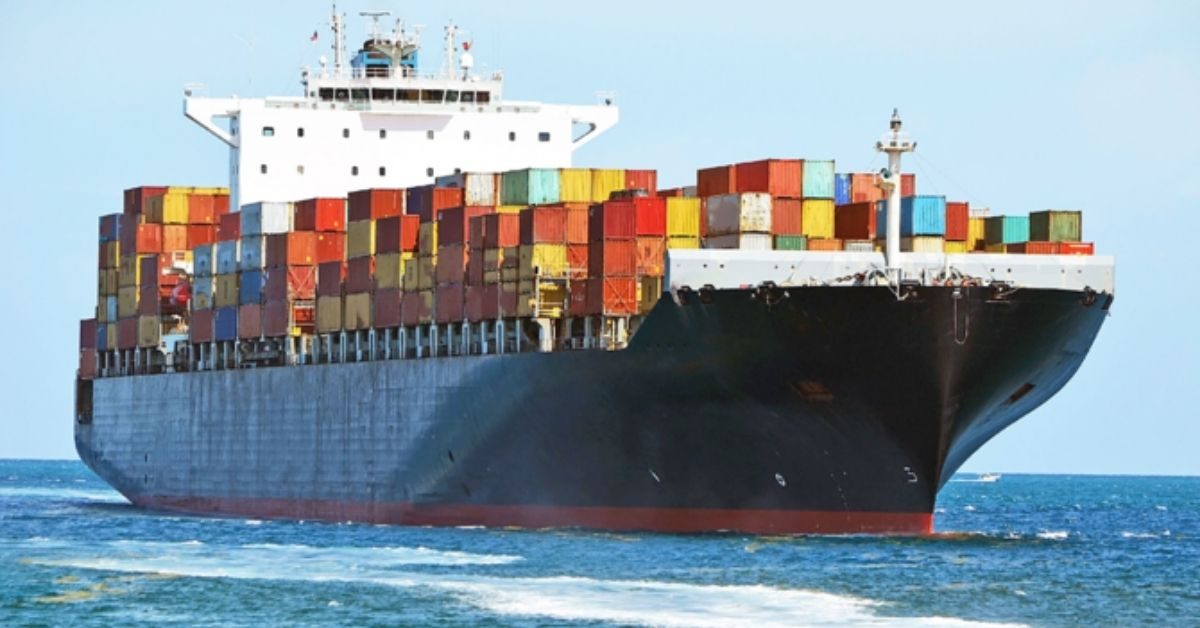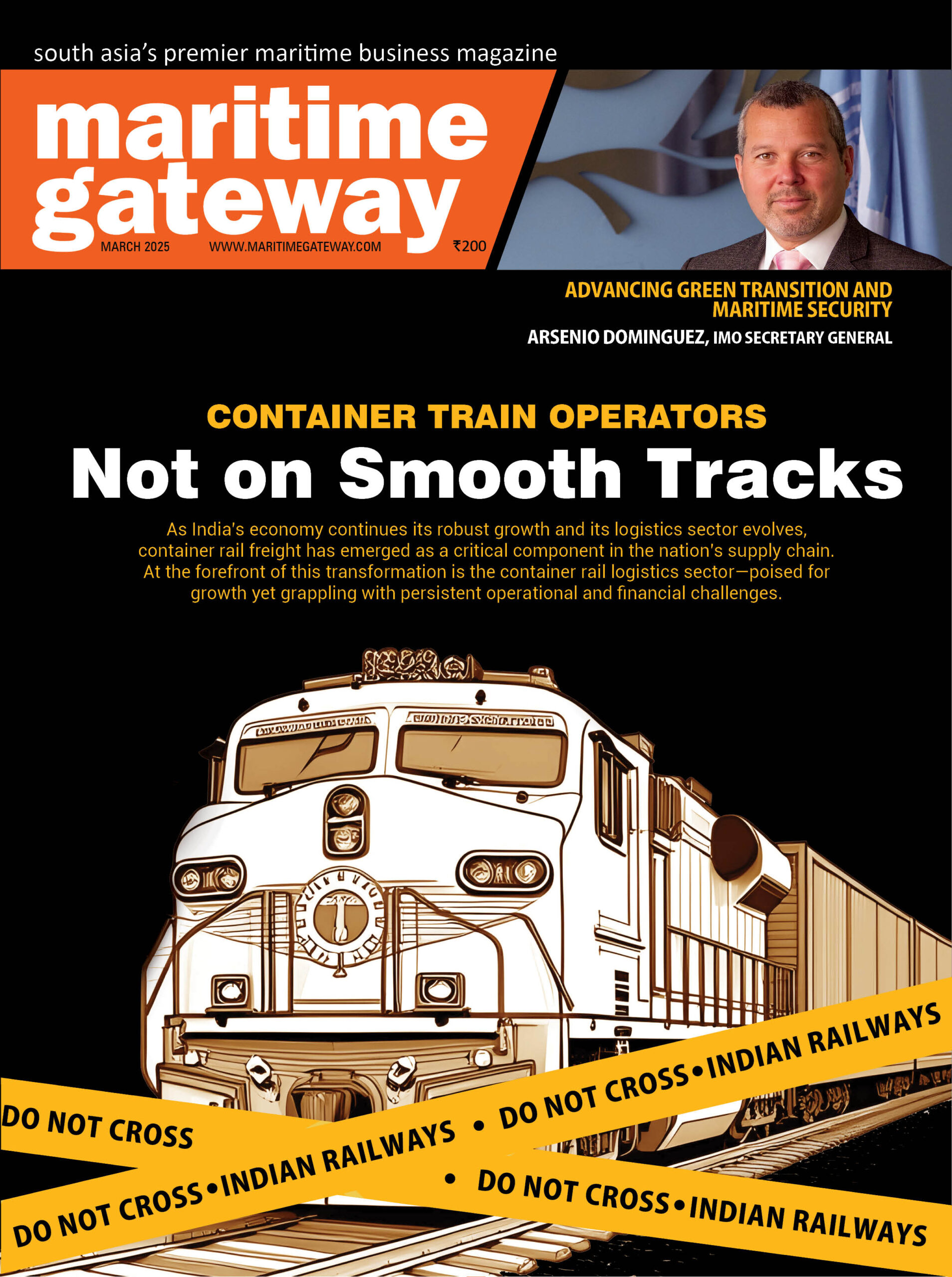Bangladesh’s export to Europe is going to have a much less lead time and cost from February as a direct freight service is starting from Chattogram port to Europe – the country’s biggest apparel export destination.
The first ship on the route, carrying export goods, will leave Chattogram for the Port of Ravenna in Italy in the first week next month.
Initially, two ships will transport export containers from Chattogram on the route every 25 days.
It will take just 16 days to reach Italy for a ship through this route, which currently takes about 40 days as they have to travel via several transshipment ports.
Businessmen and Chattogram port officials expect that the direct route will reduce the shipment cost by around 40%.
Italian shipping company Kalypso Compagnia di Navigazione SPA Italy will transport Bangladeshi export goods via two container vessels – the Cape Flores and the Songa Cheetah.
The Cape Flores is the flagship of the Marshall Islands with a draught of 8.66 metres – the depth of water needed for a ship to float – and a container capacity of 1,200 twenty-foot equivalent units (TEUs). Its length is 154.47 metres and width 25.19 metres.
The Songa Cheetah is currently on its way to Chattogram port. The Liberian flagship with a draft of 6.2 metres will arrive at the port on 5 February.
Reliance Shipping and Logistics is working as the local agent of the two ships in Bangladesh.
Mohammed Rashed, chairman of Reliance Shipping and Logistics, said, “Songa Cheetah left the port of Ravenna, Italy on 17 January with 945 TEUs of empty containers and 7 TEUs of containers with garments and raw materials. It will reach Chattogram port on 5 February. The ship will sail for Italy on 7 or 8 February with containers.”
“The ship will carry about 16,500 tonnes of export goods in around 1,100 TEUs of containers. Of this, 98% are readymade garments and the remaining 2% are handicraft, leather and jute products. Once the goods reach the port of Ravenna, they will be delivered to various destinations in Europe as per the demand of the buyers.”
The Cape Flores had already arrived at Chattogram port on 24 December with empty containers.
Currently, Italy-bound container ships from Chattogram port first have to reach a European base port such as the Port of Rotterdam in the Netherlands, the Port of Antwerp in Belgium and the Port of Hamburg in Germany via transshipment ports such as Singapore, Colombo in Sri Lanka, Tanjum Palapas and Kelang in Malaysia and a few in China. From there, they can go to Italy.
In some cases, goods are carried to Italy in mother vessels directly from the transhipment ports. But, most of the time, containers are unloaded at European base ports in the absence of the mother vessel’s schedule in Italy. From there, goods are shipped to Italy in feeder vessels.
A shot in the arms for export trade
Traders said this initiative will reduce costs in export-import trade including the fixed operating cost of ships and strengthen Bangladesh’s position in the competitive market.
According to people concerned, 51% of Bangladesh’s export trade is with Europe.
Therefore, if this route becomes popular, it will create a new milestone in the export sector of the country, they said, adding it will attract new buyers and expand the country’s export sector.
Rear Admiral M Shahjahan, chairman of the Chattogram Port Authority (CPA), told The Business Standard, experimental shipping on this route has already been completed successfully.
In April last year, about 25,000 Bangladeshi containers with imported goods were stuck at transshipment ports in Sri Lanka and Malaysia which affected traders as their production was stopped as the raw materials could not reach the factory on time. These containers were later brought to Chattogram port by additional feeder vessels.
Traders said the import-export trade of Bangladesh is being affected due to congestion in transshipment ports.
According to data provided by the Chittagong Port authorities, the premier seaport in the country handled over 15.25 lakh TEUs of export containers in 2021. Last December, it handled over 1.30 lakh TEUs of export containers.
Port sources told TBS that they do not have any statistics as to how much of these goods is transported to Europe or to other continents since they are shipped to their destinations after being unloaded in transshipment ports.
The Bangladesh Garment Manufacturers and Exporters Association (BGMEA) and the Shipping Agents’ Association, however, say 55% of the overall export trade of the country is done with European countries.
Apparel accounts for some 82% of Bangladesh’s total exports. Therefore, considering that on an average some 1.27 lakh TEUs of export containers left Chattogram port for various destinations every month last year, the volume of average monthly apparel exports last year was about 1.4 lakh TEUs, of which over 57,200 TEUs went to Europe alone.
Syed Nazrul Islam, first vice-president of Bangladesh Garments Manufacturers and Exorters Association (BGMEA), said, “Europe is the largest market for the garments industry of Bangladesh. The new route will halve the current shipping cost. It is very positive news for the country’s export sector.”
Syed Iqbal Ali Shimul, senior vice president of Bangladesh Shipping Agents Association, said at present, about 51% of Bangladesh’s export products go to Europe, 25% to America, 20% to Asia and 4% to Canada.
Sources with shipping lines said foreign buyers take products from Bangladesh on Free on Board (FOB) basis, in which case the buyers bear the shipping fare.
At present, the fare for transporting a 40-foot container ship from the transhipment ports to Italy ranges between $10,000 and $14,000 depending on shipping lines, people concerned said, adding the freight charge could be $6,000-$7,000 on the new route.
Chattogram port accounts for 92% of the total export-import trade of Bangladesh. Besides, 98% of the container shipment is done here. However, the exporters are sometimes forced to send their products by air after missing the schedule of the export ships. This increases the transport cost manifold.
Rakibul Alam Chowdhury, vice president of BGMEA, said, “There remains a risk of missing the mother vessel even if the feeder vessels are late for one day to reach the transshipment port. In many cases, ships leave the Chattogram port without taking the goods to get the schedule of the mother vessel. This makes it uncertain to send the product to the customers at the stipulated time. In this situation, the new shipping route with Europe has created huge potential for Bangladesh’s export sector.”
Traders have also suggested the authorities create more routes for direct container ship movement to other ports in Europe and America.
Mahbubul Alam, president of Chattogram Chamber of Commerce and Industry, said, “This is a great achievement for Bangladesh. Direct shipping with Europe will add a new dimension to the country’s export sector. However, the authorities must ensure that the service continues without any disruption.”
Syed Mohammad Arif, chairman of Bangladesh Shipping Agents Association, said, “Various charges have to be paid in different stages to send products to Europe. Direct transport of goods will save a huge amount of money. Foreign buyers will be benefitted as the cost of transporting goods will be reduced. This will play a big role in creating new buyers.”
What led to the initiative?
The main-line operators (MLOs) previously did not take any steps to launch direct container services with Italy because getting enough cargo would be a big challenge if such services were launched. Main-line operators are carriers employing vessels in the main or principal routes in a trade but not participating within a consortium.
Rashed said the main lines are not providing adequate containers amid the pandemic situation, leading to as high as 10 times increase in freight charges, in some cases.
“The principals are currently suffering because of these issues. They are struggling to deliver products on time even after spending extra money. So our principal has decided to hire ships and carry the containers themselves.
“Against such a backdrop, the Chattogram-Italy direct container shipping has started. It is expected that other main-line operators will also take initiatives to start shipping on this route. Then, freight charges will go down further.”
Principal means the firm or person who is the owner or charterer or manager of the vessel represented by a company and/or the carrier under the bill of lading in connection with which services are provided by the company.
Most of the European countries have road connectivity between them, Rashed mentioned, adding, “After the goods arrive in Italy, a majority of those will be delivered to their destinations by road. The goods that need to be transported by waterway will be delivered to their destinations in feeder vessels.”
Large shipping lines still less interested
Ajmir Hossain Chowdhury, assistant general manager of Mediterranean Shipping Company, told TBS that they view the issue of direct shipping with Italy in a positive light. But it remains to be seen how successful this initiative becomes, he added.
“Here goods of a particular shipping line will be transported, the amount of which is very low. Besides, mother vessels cannot anchor at the inner anchorage of the Chittagong Port because of its shallow depth. Therefore, goods have to be transported to Italy by small ships. This involves the risk of accidents.”
Mentioning that large shipping lines are less interested in shipping to Italy with smaller ships, he said the shipping lines will come forward to transport goods directly to Europe once the Bay Terminal becomes operational.
Source : Hellenic Shipping News







